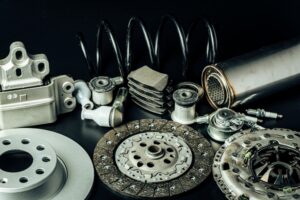A car checklist for an extended warranty should include verifying coverage details, understanding the claim procedures, and familiarizing oneself with the warranty’s terms and conditions. It’s crucial to confirm the warranty’s start and end dates, covered components, and any limitations or exclusions. Understanding the claims process, including deductibles, authorized repair facilities, and potential additional costs, is essential for maximizing the benefits of the extended warranty.
Coverage Options & Limitations
Extended warranties vary in their value depending on several factors. They require regular maintenance checks; otherwise, the warranty will be voided. Finally, quality matters greatly: if your provider takes too long pre-authorizing repairs, it could delay getting your car fixed on schedule.
Based on your plan selection, your warranty may expire within either a certain time frame or 100,000 miles, or both! Certain plans do not cover activities such as racing or off-roading with your vehicle. Always read and ask any questions of the warranty provider before purchasing one.
Covered Components
An extended warranty protects your car against major repair costs that might arise after its manufacturer’s warranty expires. When selecting one, carefully compare its specifics—look for what the warranty covers, including the covered components and any exclusions.
This is especially important if you are considering a used car, as coverage options may differ from those for new cars. Always read the fine print thoroughly to understand limitations, deductibles, and claim procedures before making a purchase decision.
Make a routine car maintenance checklist, including:
Daily checks
- Unusual noises
- Warning lights
Monthly tasks
- Fluid changes
- Tire inspections
Annual services
- Filter replacements
- Brake examinations
Adjust it based on seasonal factors – for instance, cold temperatures can put additional strain on battery power and cooling systems.
Claim Process
An extended car warranty provides peace of mind against expensive repair bills after your factory warranty has expired, including components experiencing gradual wear and tear, such as batteries or cooling systems. But, this could only help if the claim process is easy. Here’s a typical warranty claim process for you:
- Identify the Issue: Notice a mechanical or electrical problem covered under your warranty.
- Contact Warranty Provider: Call or go online to notify the provider before getting any repairs.
- Get Authorization: The provider may require a diagnosis by an approved repair facility.
- Inspection (if needed): Some claims require a third-party inspector to verify the issue.
- Repair Estimate Approval: The shop sends an estimate; the warranty company approves covered repairs.
- Pay Deductible (if applicable): You pay your portion, usually a flat fee.
- Repair is completed: The provider pays the shop directly or reimburses you (depending on policy).
- Keep Documentation: Save all invoices and paperwork for your records.
Transferable Extended Car Warranty
If you plan on selling your car at some point in the future, our extended warranties can be transferred over to its new owner. This adds value and provides peace of mind that their new purchase is covered by an established car extended warranty provider.
When researching warranties, it’s also important to determine whether they offer exclusionary or stated component plans. Exclusionary plans only cover repairs explicitly outlined, while stated component covers everything except repairs specifically listed as exclusions in your contract.
Additional Benefits & Deductibles
When choosing an extended warranty plan, consider its coverage level and deductible. Moreover, consider additional benefits like rental car reimbursement or 24-hour roadside assistance that could save you hundreds or even thousands over its lifecycle.
No matter if you select a bumper-to-bumper or specified component plan, be sure that your provider has an excellent track record and is accredited by the Better Business Bureau. Here are some advantages of extended warranty.
Check Your Owner’s Manual
Your vehicle’s owner’s manual is an invaluable source of knowledge about its inner workings and can teach you everything from what type of fluids are suitable to maintaining its health to knowing the optimal PSI levels for tires. It will inform you on everything necessary.
Furthermore, it will explain what all those dashboard warning lights mean as well as how best to respond. Failure to adhere to your warranty’s recommendations could void it and cost you big money in the long run. Creating a system to track regular maintenance will make adhering to manufacturer guidelines much simpler.
Conclusion
An extended car warranty isn’t just a safety net—it’s smart planning for whatever the road throws your way. With Nova Warranty, you’re not just buying coverage—you’re gaining a partner that values transparency, speed, and real support when it matters most.
Ready to protect your ride and your wallet?
An extended warranty is more than a backup plan—it’s your defense against costly, unexpected repairs. By understanding your coverage, keeping up with routine maintenance, and knowing how to file a claim, you’ll get the most value from your protection.
With Nova Warranty, you’re backed by a team that prioritizes quick approvals, clear terms, and reliable support every step of the way. We make coverage simple and dependable, so you can stay focused on the road ahead. Protect your vehicle with confidence. Get a free quote from Nova Warranty today and explore plans tailored to your needs, budget, and driving habits.






